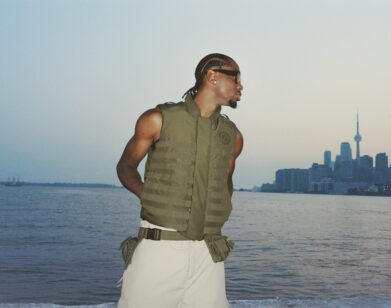Questionnaire: Bettina, model and muse

During the postwar creative boom of early 50s France, three fashion designers revolutionized couture: Christian Dior, Pierre Balmain, and Jacques Fath. Supermodel Simone Micheline Bodin Graziani, pet named “Bettina” by Balmain, rubbed shoulders with all of them, and played muse to the youngest of them, Fath. With her red hair and fresh face, Bettina personified the innovation, wit, and accessibility of Fath’s brand. Fath died in 1954, but his bold silhouettes, dramatic necklines, and unorthodox flourishes—”flying saucer buttons,” popularized by Hollywood starlets and Bettina’s editorials—continue to influence designers like Viktor & Rolf, John Galliano, and Giambattista Valli. Bettina famously lent her name to an iconic blouse by Hubert de Givenchy, from his first collection, but she considers her formative Fath years the highlight of her career. Half a century later, Bettina’s enduring legacy as Fath’s muse receives significant focus in Jéromine Savignon’s new book, Jacques Fath.
Now 83, Bettina speaks to Interview about her experiences with Fath and shares her current perspectives on fashion’s past and present. Tonight, she and Jéromine Savignon co-host the Jacques Fath book launch party at the Plaza Hotel’s Assouline boutique.
Colleen Nika: History has come to associate you with Givenchy, but before your worked with him, you were a muse to Jacques Fath. How did he jumpstart your career?
Bettina: I started working with Fath when I was very young, back in 1947. I had modeled before then, but on a much smaller scale. And I worked with Fath longer than any other designer in my career—four years. From the draping process through our presentations and campaigns, he used me for all of his new collections. He liked that I was “different”: I was very young, very genuine. I wore no makeup and I had red hair. At the time, Fath was interested in conveying an American spirit and a brand new attitude. He wanted to communicate a modern image to the media; it was very important to him. So, I became the face of Fath.
CN: What do you consider most memorable during your years as Fath’s muse?
B: Fath would throw costume balls in the countryside, at the Château de Corbeville. All the best buyers, stars, writers, even other designers like Balenciaga and Balmain would come. Sometimes we would throw 20s– and 30s–themed partiesm, or cowboy-themed parties. Imagination was everything. And we had a great time at Fath’s studio, especially during draping sessions. Givenchy, who worked there when he was very young, says it was a beautiful experience and that he learned so much during that time. Guy Laroche got his start there, too. This was just after the French liberation; we all lived for the creative moment.
CN: After your Fath years, what path did your modeling career take?
B: I worked for Givenchy for two years. I also did a lot of magazine work. I was everywhere: in Vogue, of course, but also in Elle, which was a very new magazine at that time. In those days, the models would have their name credited in the magazines, so I had a lot of publicity. I stopped modeling in the late 50s, but later, I did some work for Valentino and I was a US press agent for Emanuel Ungaro.
CN: What are your thoughts on the contemporary modeling profession?
B: The models are different now—they are so young, and they all look the same. Of course, I was young when I started, too, but there was so much less competition, less big names. But then, the entire business was different. The presentations were much smaller; collections were shown to select clients in salons, like a trunk show. You could reach out and touch the clothes. It was approachable. Back then, there was no ready-to-wear, only couture. Of course, because the runway events are so costly now, the industry is returning to smaller presentations. But the model’s role has definitely changed.
CN: Speaking of the present, how are you keeping busy these days?
Are you still actively involved in fashion? What designers interest you?
B: Well, I travel a lot; I recently was in Malta and the Riviera. But I live in Paris, so I am still very engaged with fashion. I go the shows every season. My favorite designers? Azzedine Alaia and Yohji Yamomoto. But especially Alaia; he is the ultimate innovator. Actually, I am wearing couture Alaia now—he made this for me two years ago. [stands up to show sculptural black sheath]. And I still am very busy; I have many projects. People call me all time—they want to interview me: they ask me about the Parisian fashion scene of the 50s; they want my pictures and commentary. And I love talking about fashion history, so I am happy to do it.
Jacques Fath is now available from Assouline.






